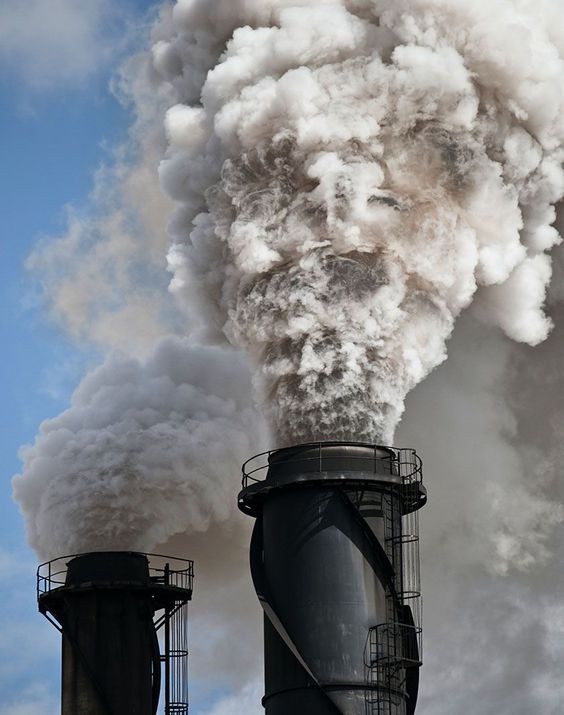World
World’s Most Polluted Countries 2022

By Balogun Kamilu Lekan
More than 11 million people die prematurely each year due to pollution, a larger number of deaths than are caused by all of the world’s major diseases combined, including AIDS, malaria, and tuberculosis.
The World Health Organization (WHO) estimates that air pollution from coal, oil, and gas-burning sources kills close to 9 million people annually throughout the world.
According to the same data, 99% of the world’s population currently lives in areas where the air quality is poorer than the WHO’s recommended levels, exposing them to high levels of pollutants.
These fatalities arise due to rising rates of heart disease, lung cancer, chronic obstructive pulmonary disease, stroke, and acute respiratory infections. In addition to causing illness, it also leads to stunted growth, which leads to miserable living conditions and destroys ecosystems.
Although pollution has been a problem since the industrial revolution, it has gotten worse recently due to the use of pesticides, agricultural crop residues, forest fires, urbanization, desert dust, and poor waste management.
Below is a list of countries with the highest levels of air pollution in the world
1. Bangladesh
Bangladesh has the highest levels of air pollution in the world, with an average PM2.5 level of 77.10, which, while still very high, is a decrease from the 97.10 levels in 2018 and the 2019 average (83.30). To this day, Dhaka City is one of the most polluted cities in the world.
Bangladesh’s brickmaking industry, which annually produces 23 billion bricks, is the main cause of the country’s air pollution. Massive amounts of smoke and dust are produced by the furnaces used to make bricks, which burn wood or coal.
Other factors contributing to the pollution are groundwater contamination, solid waste, and noise pollution.
2. Pakistan
Pakistan ranks second in the world for pollution, with an average PM2.5 concentration of 59.00. Punjab’s air quality index (AQI) ratings in 2019 ranged from “near unhealthy” to “very unhealthy,” reaching as high as 484.
An increase in vehicles on the road, smoke emissions from steel mills and brick furnaces, extensive deforestation, and trash burning cause Pakistan’s environmental issues.
3. India
India ranks third on the list of most polluted nations, with an average PM2.5 concentration of 51.90.
21 of the world’s most polluted cities are located in India. India’s most polluted city is Kanpur, where each month, the medical college admits about 600 patients with respiratory illnesses.
Several factors contribute to India’s poor air quality, including burning coal and wood, dust storms, forest fires, and vehicle emissions.
The air quality in Delhi, India’s capital region, is so bad that flight delays, traffic collisions, school closings, and even the Taj Mahal’s white marble turning yellow and green are frequent occurrences.
Most pollution in India’s rural areas is caused by residents’ continued use of crop stubble burning and dung and wood for heating and cooking.
4. Mongolia
Mongolia is the fourth most polluted nation in the world, with an average PM2.5 concentration of 46.60. Most of the pollution this nation experiences is caused by burning coal and biomass.
Ulan Bator, the capital of Mongolia, has seen a 270% rise in respiratory infections over the past ten years. Children who live in cities have 40% worse lung function than those who do not. In Mongolia, air pollution has a negative impact on between 70 and 90 percent of pregnant women receiving care at family health centres.
As a result, pneumonia and other respiratory illnesses can be detected in babies as young as two days old.
5. Afghanistan
Afghanistan is the fifth most polluted country in the world, with an average PM2.5 level of 46.50. It was discovered in 2017 that air pollution posed a more significant threat than the conflict in Afghanistan.
In the same year, about 26 000 people died from illnesses brought on by air pollution, while only about 3 500 people died from armed conflict. Due to infrequent groundwater use, low rainfall, and inadequate urban infrastructure, an estimated 80% of Afghanistan’s drinking water is tainted. As a result, food poisoning is a common problem for people in this nation.
Disclaimer
The information in this article was curated from online sources. NewsWireNGR or its editorial team cannot independently verify all details.
Follow us on Instagram and Facebook for Live and Entertaining Updates.
Always visit NewsWireNGR for the latest Naija news and updated Naija breaking news.
NewsWireNGRLatest News in Nigeria
Send Us A Press Statement/News Tips on 9ja Happenings: [email protected].
Advertise With Us: [email protected]











